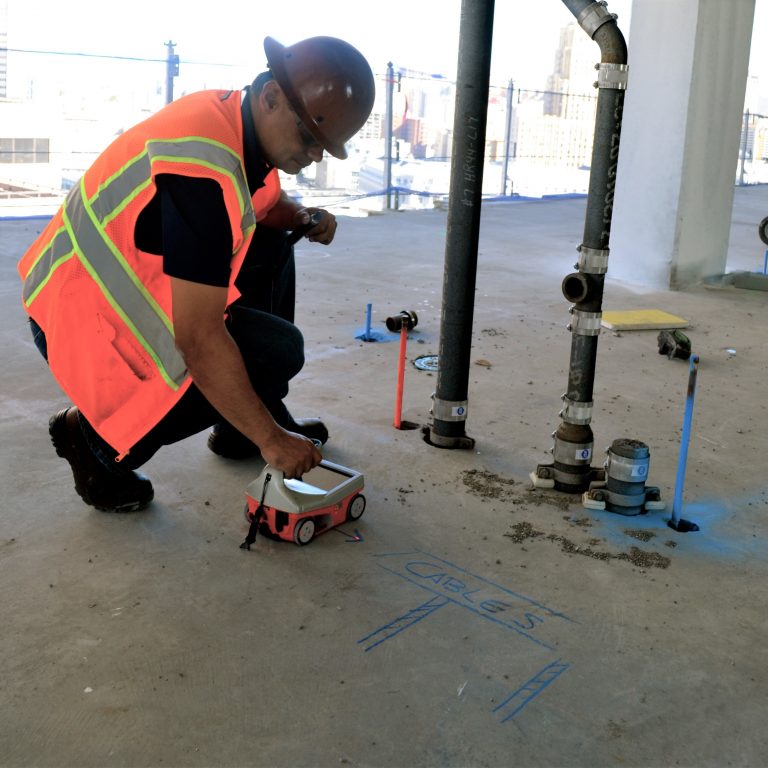Advanced Concrete Scanning Techniques: Making Sure Architectural Honesty
Advanced Concrete Scanning Techniques: Making Sure Architectural Honesty
Blog Article
Reveal the Transformative Power of Concrete Scanning in Making Best Use Of Efficiency and Safety And Security
Concrete scanning has arised as a crucial tool in the building sector, using unrivaled advantages in improving task performance and making sure safety and security standards. The transformative power of concrete scanning exists in its capacity to give real-time data and comprehensive understandings, revolutionizing exactly how jobs are intended and performed.
Value of Concrete Scanning
Ensuring the architectural stability and safety of building and construction jobs begins with the crucial step of performing complete concrete scanning. Concrete scanning is a non-destructive method used to discover and map subsurface elements within concrete structures. This procedure is important in identifying potential threats, such as rebar, post-tension cords, and avenues, that may be hidden within the concrete. By making use of sophisticated technologies like ground-penetrating radar (GPR) and electromagnetic induction, building and construction groups can accurately locate these elements without causing any kind of damage to the framework.
The importance of concrete scanning can not be overstated, as it plays an important duty in avoiding crashes, minimizing task hold-ups, and making certain the lasting resilience of the construction. By recognizing potential hazards before the building phase begins, builders can implement appropriate safety procedures and make educated choices pertaining to the design and execution of the task. In addition, concrete scanning aids in optimizing task timelines and spending plan by preventing unanticipated expenses and hold-ups that might occur because of unanticipated obstructions within the concrete. Inevitably, investing in detailed concrete scanning is an aggressive technique that improves both effectiveness and safety and security in construction jobs.
Exactly How Concrete Scanning Works
Concrete scanning operates as an essential tool in building jobs by using advanced innovations to find and map subsurface aspects without causing architectural damage. Ground Passing Through Radar (GPR) and Electromagnetic Induction (EMI) are two main techniques made use of in concrete scanning.
During the scanning procedure, the data collected is examined in real-time, enabling immediate identification of prospective dangers or obstacles below the surface. By using these innovative modern technologies, concrete scanning dramatically decreases the threat of expensive problems and injuries on building websites.
Advantages of Concrete Scanning
One of the main advantages of concrete scanning is the capacity to find and locate embedded objects such as rebar, post-tension cables, and channels precisely. Concrete scanning aids in planning and developing a lot more efficiently, as it offers specific information concerning the place and depth of structural elements.

Situation Studies: Concrete Scanning Success

In another case, a building and construction firm used 3D concrete scanning to analyze the problem old concrete structures in a historical structure. The thorough scans provided useful understandings into the extent of degeneration and aided focus on upkeep initiatives effectively. By proactively attending to areas of issue identified through scanning, the firm had the ability to extend the life expectancy of the structure and guarantee passenger safety and security.
These study underscore the transformative power of concrete scanning in improving performance, accuracy, and security in building jobs.
Executing Concrete Scanning in Projects
Executing sophisticated scanning innovations throughout building projects has actually ended up being progressively essential for improving accuracy and safety. By integrating concrete scanning right into job preparation and implementation, building teams can determine possible risks, such as rebar or post-tension cords, concealed within concrete structures. This positive method decreases the threat useful content of mishaps, hold-ups, and costly rework, ultimately causing more effective task timelines and budget plans.
To carry out concrete scanning efficiently, project managers must work together closely with experienced scanning specialists to figure out one of the most appropriate scanning strategies for the details task demands. Involving scanning specialists from the beginning of a task makes it possible for the group to develop extensive scanning plans that resolve key locations of concern and make certain complete information collection.
Furthermore, incorporating concrete scanning right into routine project operations can simplify decision-making procedures, as real-time check data gives immediate understandings right into the problem of concrete frameworks - Concrete Scanning. This data-driven method helps with notified analytic and allows groups to make changes immediately, promoting a society of effectiveness and security throughout the project lifecycle

Verdict
To conclude, concrete scanning plays a crucial duty in boosting effectiveness and safety in building and construction jobs. By utilizing sophisticated modern technology to spot and map out underlying structures within concrete, this process aids to avoid expensive blunders, make certain structural integrity, and lessen risks on site. With the ability to discover surprise aspects and offer accurate information, concrete scanning confirms to be an important device for enhancing project outcomes and Learn More Here making best use of overall success.
Concrete scanning is a non-destructive approach used to discover and map subsurface components within concrete frameworks. Additionally, concrete scanning assists in optimizing project timelines and spending plan by avoiding unexpected prices and hold-ups that might emerge due to unanticipated blockages within the concrete. One significant case research study entails a large improvement task where concrete scanning played a crucial function in guaranteeing task success.In another case, a building and construction company used 3D concrete scanning to evaluate the condition of maturing concrete frameworks in a historic structure. By integrating concrete scanning into task planning and execution, building groups can determine prospective risks, such as rebar or post-tension wires, concealed within concrete frameworks.
Report this page